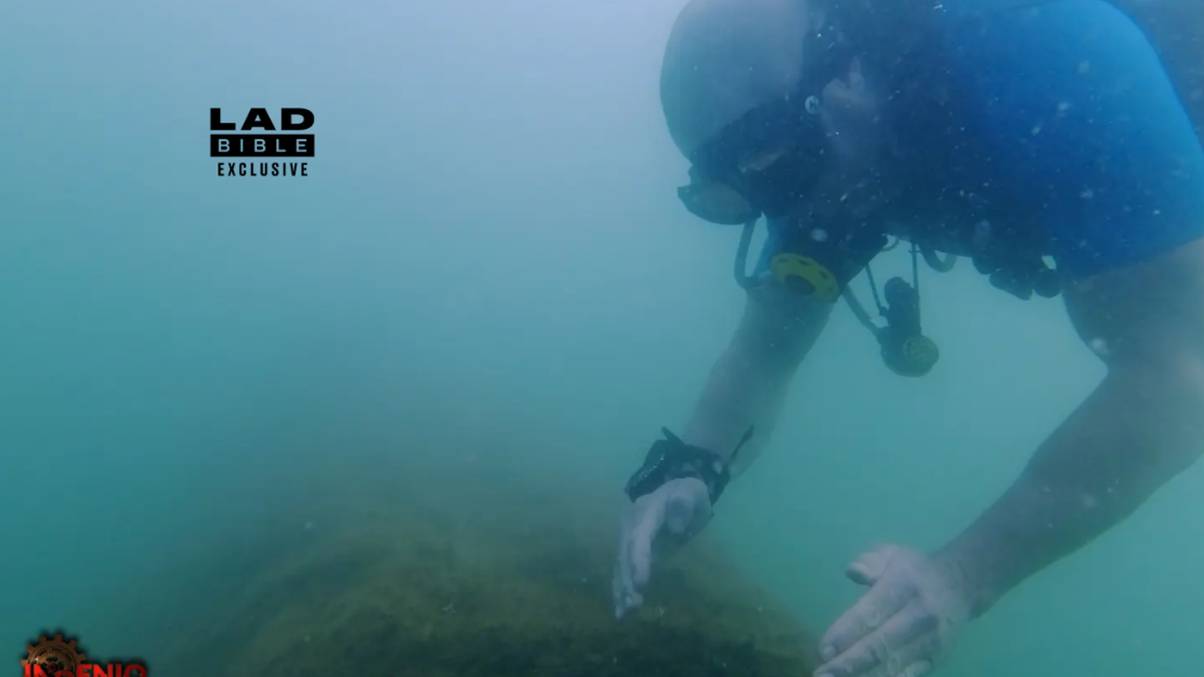“Unveiling the Abyss: The Chilling Encounter with a Mysterious Deep-Sea Monster Captured on Camera”
Ever wondered what lurks in the depths of the ocean, where the sun’s rays can’t reach and humans dare not swim? While we can only hold our breath and plunge down to about 300 meters, our tech-savvy friends—the cameras—are more than capable of charting out the eerie terrain below. Journey with scientists from a recent expedition into the Tonga Trench in the Pacific Ocean, where they dropped a camera to explore the unfathomable realm beneath the waves. What they caught on film? A curious Pacific Sleeper Shark that decided to inspect the camera, maybe wondering if it was a snack! This encounter serves as a striking reminder of how little we know about the vast, unexplored territories of our world—but thankfully, technology’s there to lend us a hand (or a fin!). Curious to dive deeper? LEARN MORE.
There are some depths of the sea which people simply cannot swim down to, so luckily we have some nifty cameras to drop down there and take a look on our behalf.
Humans can only dive down to depths of about 300 metres, and to get further we need special equipment like submersibles to pop down in.
Technology can get where the human body can’t, so when scientists conducting an expedition into the Tonga Trench in the Pacific Ocean dropped a camera down there, they got a good look at what lies beneath.
Beyond a certain depth lies a world that is relatively untouched by the world above so anything that drops into it warrants some investigation by the denizens of the deep.
Fortunately for us, that means the scientists got some damn good footage of a massive Pacific Sleeper Shark that swam up to the camera and gave it a bit of a munch.
This is pretty normal shark behaviour since they don’t have hands and have to investigate things by using their mouth, not that you’d want to have a shark be curious about you because then it might bite you.
Dr Jessica Kolbusz explained over the video that this footage had been taken at a depth of 1,400 metres and somewhere to the west of the Tonga Trench.
She said that the Pacific Sleeper Shark could measure up to 4.4 metres long, though the largest of them could have a length of over seven metres which is pretty freaking massive.
As for this magnificent but slightly terrifying creature of the deep blue sea, the expert explained that this particular shark was a lady.

Look at her, she’s magnificent. (The Tonga Trench Expedition)
She said: “This observation occurred to the west of the Tonga Trench, we assumed that it was fairly big, around 3.5 metres long, it was at 1,400 metres depth and due to the lack of observable claspers on the pelvic fins we’ve identified it as female.”
“She goes straight for the camera, from this view we can see completely inside the shark’s mouth.
“Not too long after that she realises it doesn’t taste very good and goes for the bait. It was around 2.5 degrees Celsius which makes sense as we know that they prefer cooler waters.”
Indeed, as Dr Kolbusz narrated, we did get to see just what an inside view of the Pacific Sleeper Shark’s mouth looked like.

The big shark had a bit of a nibble of the camera, giving a good look at what being eaten by it would be like, before moving onto the bait. (The Tonga Trench Expedition)
Fortunately for the scientists and the shark, it soon moved on to the fish they had next to the camera as bait, and did not destroy the rather unappetising deep-sea camera in an attempt to eat it.
After chomping down on the bait attached to the camera rig the very large shark then swam away, giving the scientists a good shot of just how big she was.
Built for those cold, dark depths to which a human dare not dive, the Pacific Sleeper Shark is a very impressive creature which can hunt quietly as it makes little noise moving about in water.
They tend to exist on a diet of bottom dwelling fish, while shark stomachs that have been studied also indicate they have a taste for the Giant Pacific Octopus.













